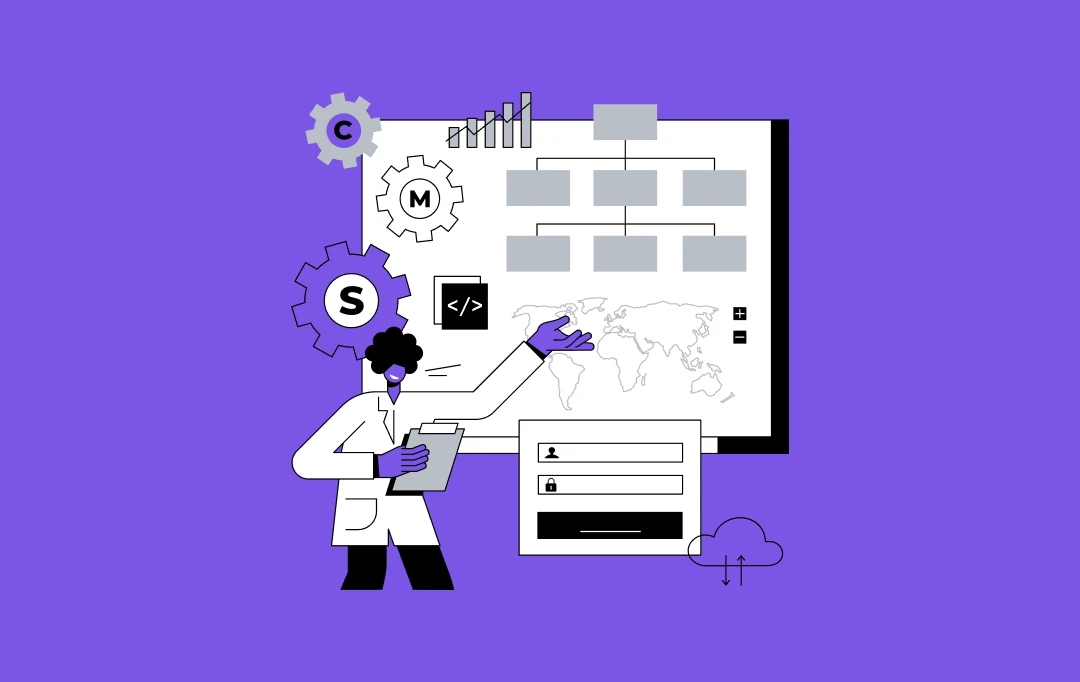- Features to Consider When You Create a Building Information Modeling Software
- Design Visualization and Simulation
- Coordination and Collaboration
- Project Management
- Energy Efficiency and Sustainability
- Facility Management
- Types of Building Information Modelling Software
- Building Information Modelling Software Development Process
- Discovery and Requirement Gathering
- Planning and Roadmapping
- UI/UX Design
- Software Development
- Testing and Quality Assurance
- Deployment and Implementation
- Maintenance and Support
- Future Enhancements and Scaling
- Building Information Modelling Software Development Cost Breakdown
- 1. Design Phase
- 2. Frontend Development
- 3. Backend Development
- 4. Integration and Collaboration Tools
- 5. Testing and Quality Assurance
- 6. Deployment and Maintenance
- Building Information Modelling Software Development: Key Points to Note
- Overcoming Challenges in BIM Software Development with Strategic Solutions
- FAQs
Construction industry, in a move to make building drawing and planning processes efficient, moved from paper to computers several decades ago. However, till some years ago this transition remained incomplete. While several CAD systems were in place to help give architects different perspectives with a simple drag of a mouse instead of creating a whole new design by hand, the industry needed something more collaborative and expansive.
That is where the talks of building information modeling software development started doing rounds so much so that its market is expected to reach $22.9 Billion by the time we hit 2034.
In this article, we will look into the different facets of what it takes to develop a building information modeling software – features, stages, challenges, and ultimately the BIM software development costs, which typically range from $100,000 – $450,000+.
Before we start, let’s set the basics in terms of what type of building information modeling software we will be talking about. The software we will be covering in detail here today will revolve around these major features and functionalities.
Features to Consider When You Create a Building Information Modeling Software
A BIM software has grown to become a powerful tool which can be used across a wide span of construction projects, impacting engineers, architects, facility managers, and contractors. Here are the features that businesses usually rely on when they plan to make a building information modeling software.
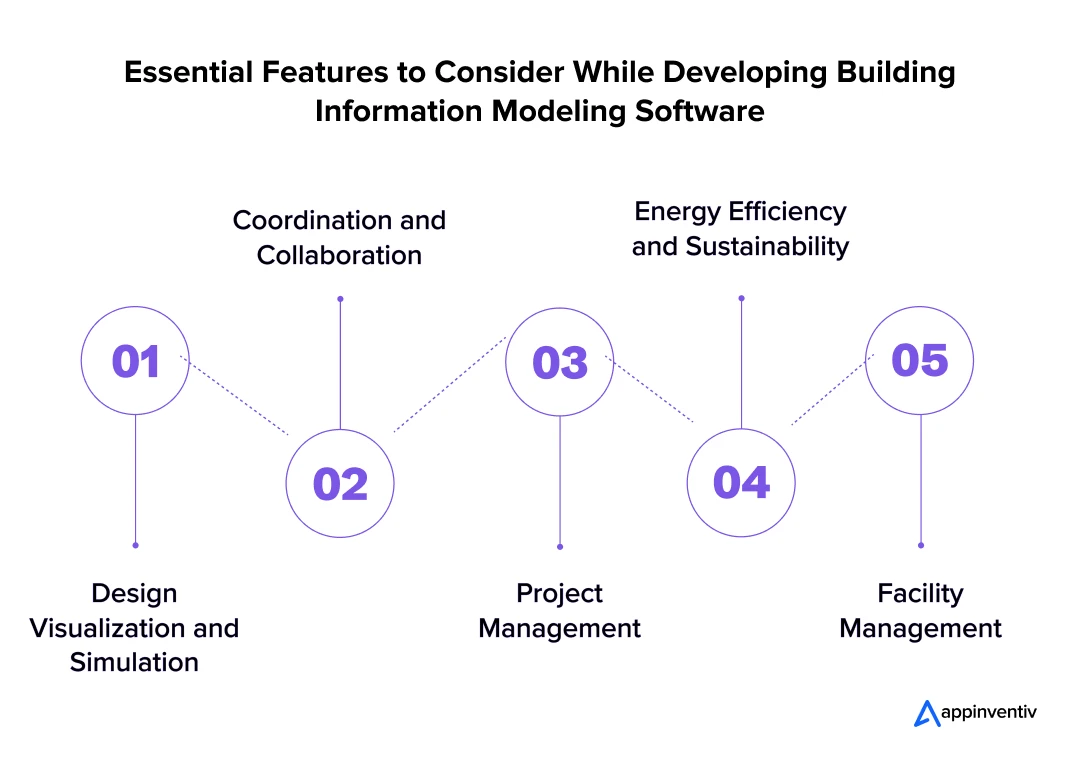
Design Visualization and Simulation
The first element to note when you make a building information modeling software is design visualization and simulation. The software should come with 3D BIM Modelling to make the process of creating 3D models which represent functional and physical characteristics of a building easier. This would also help stakeholders visualize the building design and make informed decisions.
In addition to 3D BIM modeling, the software should have a scope for allowing simulations like lighting simulations, airflow analysis, and energy performance analysis to help optimize building’s performance.
Coordination and Collaboration
Another factor to consider when you create a building information modeling software is the facilitation of collaboration between different project teams to lower miscommunication and ensure everyone’s on the same page. Similar to this, you have a clash detection feature which would help identify conflicts among multiple building systems early on, saving costly rework later.
Project Management
The building information modeling software development cost would also be defined by the extensiveness of project management features. The software should be integrated with project management tools to offer detailed cost and scheduling estimations, enabling accurate project plans and budgets estimates.
It can also be built with an AI-powered resource management feature that would offer in-depth insights into timelines, labor, and materials.
Energy Efficiency and Sustainability
Powered by AI and IoT, you can make building information modeling software to support sustainable practices by allowing energy, material, and environmental impact analysis. This would also help design building properties which are extremely environment friendly. The insights can also be used throughout the building’s life cycle for maintenance scheduling, decommissioning, and renovation planning.
Facility Management
After construction, BIM software can be built to operate as a database for facility managers, offering detailed information on building components. This would ultimately help property managers track maintenance status, manage space utilization, and ensure operational efficiency.
The reason we specified these features to develop a building information modeling software, is because we wanted to keep it generic. While this list is an overall look into what a typical software looks like, the more you dive into BIM software, you will find that there are a number of categories, each with their individual functionality sets.
Let me give you a brief.
Types of Building Information Modelling Software
First of the four types is – BIM planning tools. They are essential for coordinating the multiple stages of a construction project and set the BIM project from the right track. These platforms enable users to build optimal BIM Execution Plans (BEPs), Information Requirements (like Exchange Information Requirements EIR, Asset Information Requirements AIR, etc), while automatically checking the BIM model outcomes.
Second category is BIM authoring tools. They are used for creating actual 3D models of the buildings and the components that will be functional in them. Every domain involved in a construction project typically has their specific BIM authoring tools.
Next are BIM analysis tools, which are utilized for simulating how the property would perform or operate in different situations. Building information modeling software development around this type revolves around creating tools that use authored outputs to help architects identify problems with a design before it gets built. The software makes sure that the different parts of the building are well coordinated and fit together. This ultimately helps ensure that the building meets all the necessary code requirements, which is imperative to save money and time.
Finally we have BIM use tools. They help property managers maintain a building post-construction. The software is integrated with tools that can monitor building’s maintenance schedules, track energy usage, etc.
Now that we have looked into the generic features list and the different types of software you might have to decide from when you choose to invest in building information modeling software development. The next set of questions you might have are – what would the cost to develop building information modeling software look like, what would be the development process, and team structure, if there are any challenges, or are there any key points to focus on.
Let’s answer all of that in this part of the article.
Building Information Modelling Software Development Process
At Appinventiv, we follow a meticulous and client-focused approach to ensure that the BIM software we develop aligns perfectly with your vision and business goals. Here’s how we approach the development process:
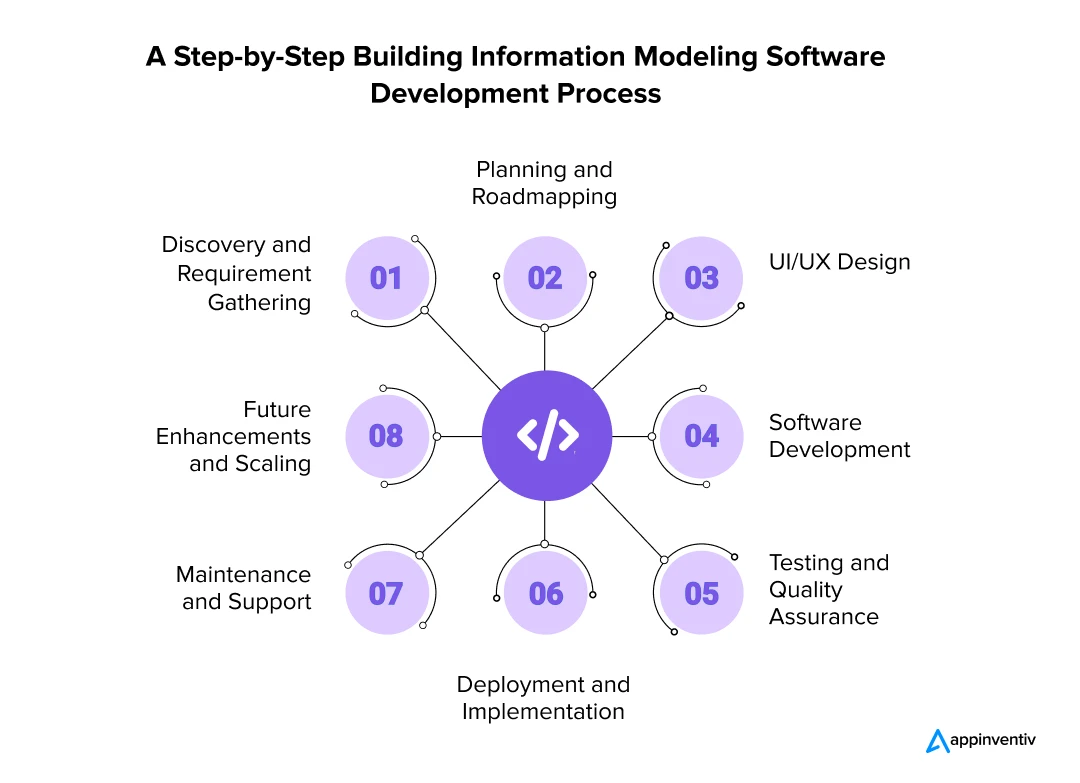
Discovery and Requirement Gathering
- Understanding Your Vision – When we create a building information modeling software, we start by conducting in-depth consultations with you to fully understand your specific needs, goals, and expectations for the BIM software. This step is crucial in ensuring that we are aligned with your business objectives from the very beginning.
- Industry Research – To ensure your software stands out, we conduct comprehensive market research, analyzing current trends, competitors, and industry standards. This helps us identify opportunities and create a solution that is not only innovative but also practical.
- Documenting Requirements – In the next part of the building information modeling software development steps, we create detailed documentation of all functional and non-functional requirements, including user stories, use cases, and technical specifications. This serves as the blueprint for the entire project.
Planning and Roadmapping
- Strategic Project Planning – We develop a detailed project plan that outlines timelines, milestones, resource allocation, and budget considerations. This plan serves as our roadmap, ensuring that every phase of the project is executed smoothly.
- Selecting the Right Technology Stack – Next part of the building information modeling software development process is that based on your needs, we recommend the most suitable technology stack that ensures scalability, performance, and seamless integration with existing systems.
- Creating a Product Roadmap – We develop a comprehensive product roadmap that outlines the development phases, starting with a Minimum Viable Product (MVP) and progressing to a fully-featured solution. This software product development roadmap provides clarity on the project’s trajectory.
UI/UX Design
- User-Centered Design – Our design process begins with in-depth UX research to understand the needs and behaviors of your end-users, such as architects, engineers, and construction managers.
- Wireframing and Prototyping – We create wireframes and interactive prototypes to visualize the software’s layout, functionality, and user flows. This step allows us to refine the user experience early in the process.
- Iterative Design Process – We collaborate closely with you to refine designs based on your feedback, ensuring the UI is both intuitive and aligned with your brand’s identity.
Software Development
- Agile Development Approach – We employ agile methodologies to ensure flexibility and continuous feedback throughout the development process. This approach allows us to deliver incremental updates and incorporate your feedback at every stage.
- Building the Backend – Our development team, as part of the building information modeling software development process builds the core functionality of the BIM software, focusing on key features such as data management, 3D modeling, and collaboration tools.
- Creating the Frontend – We develop a user-friendly and responsive interface that makes it easy for your users to interact with the software, ensuring a seamless user experience.
- Seamless Integration – We ensure that your BIM software integrates effortlessly with other tools and platforms, such as CAD software, cloud storage, and project management systems.
Testing and Quality Assurance
- Comprehensive Testing – We conduct rigorous unit and integration testing to ensure that each component functions as expected and that the software operates smoothly as a whole.
- User Acceptance Testing – We involve a select group of end-users to test the software in real-world scenarios. Their feedback is invaluable for making final adjustments.
- Performance and Security – We prioritize performance and security, conducting thorough testing to ensure your software is fast, reliable, and secure
Also Read: How Much Does it Cost to Develop an AI Testing Tool like Katalon
Deployment and Implementation
- Beta Launch – As we near the end of the building information modeling software development process, we begin with a beta launch to a limited audience, allowing us to identify and resolve any last-minute issues before the full deployment.
- Full Deployment – Once everything is perfected, we roll out the software to all users. We provide full support during this phase, including installation, configuration, and initial training.
- Comprehensive Documentation – We deliver detailed user manuals, training sessions, and support materials to ensure your team is fully equipped to use the software effectively.
Maintenance and Support
- Ongoing Support – After deployment, we offer ongoing maintenance to fix any bugs, optimize performance, and release updates with new features.
- Continuous Improvement – We continually gather feedback from users to refine and improve the software, ensuring it evolves to meet your changing needs.
Future Enhancements and Scaling
- Preparing for Growth – After we make a building information modeling software, we start planning for future scalability, ensuring your software can grow with your business. This includes scaling infrastructure and expanding functionality as needed.
- Innovating with Emerging Technologies – We keep an eye on the latest technological advancements and discuss potential future enhancements, such as integrating artificial intelligence, IoT, or AR/VR to keep your software at the cutting edge of BIM technology.
Building Information Modelling Software Development Cost Breakdown
When developing a comprehensive BIM software with the features we mentioned above, the building information modeling software development cost can vary significantly depending on the complexity of the project, the technology combination used, and the expertise, location of the development team. Here’s a breakdown of the probable costs across multiple stages of BIM software development:
1. Design Phase
- UI/UX Design: The design phase includes creating user interfaces and user experiences that are intuitive, functional, and aesthetically pleasing. This involves wireframing, prototyping, and designing the software layout. Cost Estimate: $10,000 – $40,000
- Emerging Technologies Impact: Incorporating AR/VR for enhanced design visualization may add $10,000 – $20,000 to the design cost.
2. Frontend Development
- Development of User Interface: This includes coding the user interface components using technologies like React, Angular, or Vue.js, ensuring responsiveness and seamless interaction. Cost Estimate: $20,000 – $70,000
- Emerging Technologies Impact: If integrating real-time data visualization tools or enhanced graphical rendering, BIM software development costs may increase by $15,000 – $25,000.
3. Backend Development
- Core Functionality and Database Management: Backend development covers the creation of the core logic, database architecture, API development, and integration of BIM functionalities such as 3D modeling, simulation, and data storage. Cost Estimate: $30,000 – $100,000
- Emerging Technologies Impact: Implementing AI-driven features (e.g., resource management, energy analysis) or IoT integration can add $30,000 – $50,000 to the backend development cost.
4. Integration and Collaboration Tools
- Third-Party Tools Integration: This involves integrating the software with project management tools, cloud storage, and other essential third-party applications to ensure seamless collaboration and data flow. Cost Estimate: $20,000 – $50,000
- Emerging Technologies Impact: Adding advanced collaboration features like real-time cloud syncing, AI-powered clash detection, or blockchain for secure data exchange may increase the BIM software development costs by $20,000 – $40,000.
5. Testing and Quality Assurance
- Rigorous Testing: Testing includes functional testing, performance testing, security testing, and user acceptance testing to ensure the software is bug-free, secure, and performs as expected. Cost Estimate: $10,000 – $30,000
- Emerging Technologies Impact: Implementing automated testing suites and continuous integration tools might add $10,000 – $15,000.
6. Deployment and Maintenance
- Deployment and Ongoing Support: This phase covers deploying the software on your chosen platforms, providing user training, and offering ongoing maintenance and support. Cost Estimate: $15,000 – $25,000
- Emerging Technologies Impact: If the software requires continuous updates with new AI or IoT functionalities, maintenance costs could rise by an additional $10,000 – $20,000 annually.
Total Estimated Building Information Modelling Software Development Cost
Without Emerging Technologies: $100,000 – $300,000+
With Emerging Technologies: $300,000 – $450,000+
Another critical element that would decide the overall cost to develop building information modeling software is the team size and structure of experts involved in the end-to-end process. Here’s a look into what that would look like when you partner with us.
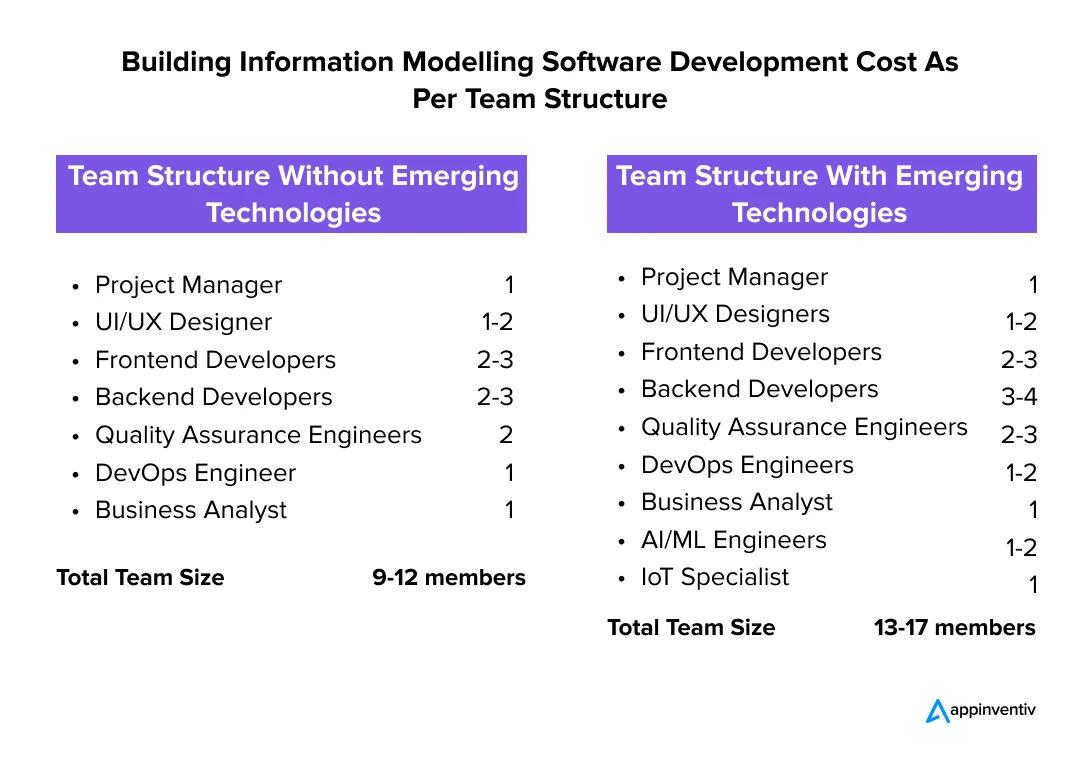
With the operational and money part of building information modeling software development now addressed, it’s time to look into the many ways you can elevate the returns on the BIM software development cost simply through a careful look into the things to consider when you create a building information modeling software.
Building Information Modelling Software Development: Key Points to Note
While the benefits of BIM software range widely from faster property designs creation, lowered wastages and costs, improved project insights, and better cost optimizations, the development and market success lies in how well-aligned the software is with current and future market needs in mind.
1. Understand Industry Regulations and Standards
To succeed in the market, it’s essential to ensure that your BIM software complies with both local and international building regulations, safety standards, and data protection laws. Adherence to standards like ISO 19650 for BIM processes and data management is as crucial as integrating widely accepted industry standards such as IFC and COBie to ensure that your software is interoperable with other BIM tools, making it more versatile and appealing to a broader user base.
2. Leverage Advanced Technologies
Incorporating advanced technologies is key to creating a competitive BIM software solution. By integrating AI and machine learning, you can enhance functionalities like automated clash detection, predictive analytics for project timelines, and resource management.
Utilizing IoT can enable real-time monitoring and data collection throughout the construction and operational phases of a building’s life cycle, improving efficiency and decision-making.
Furthermore, adding AR/VR capabilities can provide immersive design visualization and simulation experiences, allowing stakeholders to interact with 3D models in real time, which can lead to more informed decisions and optimized building performance.
3. Ensure Seamless Integration
For your BIM software to be successful, it must seamlessly integrate with other essential tools. Ensuring compatibility with third-party tools like CAD software, project management platforms, and cloud storage solutions is critical. Your partnered construction software development company should also provide robust APIs to enable seamless integration with existing systems and other BIM platforms, ensuring data consistency across the project lifecycle and enhancing the software’s utility.
4. Pricing Strategy
A well-thought-out pricing strategy can give your BIM software a competitive edge. When considering building information modeling software pricing, it’s important to offer flexible pricing models, such as subscription-based pricing, pay-per-use, or tiered plans, to cater to different types of customers. Clearly articulate the value your software provides, justifying its cost with unique features, superior support, or advanced technology integration, which can help in attracting and retaining customers.
5. Data Security and Privacy
Data security and privacy are paramount in the development of BIM software. Implementing robust security measures, such as encryption, secure access controls, and regular security audits, will help protect sensitive project data. Moreover, ensuring compliance with data privacy laws like GDPR, especially if your software will be used in regions with strict data protection regulations, is critical to building trust with your users and safeguarding your reputation.
6. Scalability and Future-Proofing
Building your BIM software on a scalable architecture is essential for long-term success. This ensures that the software can grow with your users’ needs, accommodating more data, users, and features over time. Additionally, planning for future updates and the integration of new technologies will help keep your software relevant and competitive in the long run, allowing you to adapt to evolving industry demands and user expectations.
Overcoming Challenges in BIM Software Development with Strategic Solutions
As you and your delivery partner work through the points to make the software successful, there is a chance that you might encounter some challenges, like we encountered in our first BIM project. Knowing what those challenges are can give you an edge as you develop a building information modeling software.
1. Complexity of Integrating Multiple Disciplines
One of the primary challenges in building information modeling software development is the complexity of integrating data and workflows from various disciplines, including architecture, engineering, construction, and facility management.
To address this, it’s crucial to implement robust data standards like IFC and open APIs, which facilitate interoperability between different tools and systems. Additionally, focusing on creating a user-friendly UX and UI that simplifies complex processes can help promote better collaboration among all stakeholders.
2. High Development Costs
The cost to develop building information modeling software can be expensive due to the need for advanced features like 3D modeling, simulations, and AI-driven analytics.
To manage these costs effectively, consider starting with a Minimum Viable Product that focuses on core features, and then gradually adding advanced functionalities as needed. You can also explore cost-effective development strategies, such as using open-source tools where feasible and outsourcing non-core components to specialized developers, to control the budget.
3. Data Security and Privacy Concerns
BIM software often handles sensitive project data, including proprietary designs and personal information, making data security and privacy a significant concern.
To mitigate these risks, it’s essential to implement strong encryption, secure access controls, and conduct regular security audits. Additionally, ensuring compliance with data protection regulations like GDPR is vital, along with providing regular training for the development team on best practices for data security.
4. Scalability Issues
As projects grow in complexity and size, ensuring that the BIM software can handle increasing amounts of data and users without compromising performance becomes a major challenge.
To address scalability issues, it’s important to design the software with scalability in mind from the outset, utilizing cloud-based architecture that can easily scale to accommodate growth. Implementing performance optimization techniques such as load balancing, database indexing, and caching can also help with ensuring that the software remains responsive even as demands increase.
5. User Adoption and Training
Another challenge is ensuring that users adopt the BIM software and are adequately trained to use it effectively, given its complexity.
To overcome this, it’s important to invest in creating a user-friendly interface that minimizes the learning curve. Businesses that focus on providing comprehensive training resources, including tutorials, webinars, and support, will ultimately help users feel confident in using the software, leading to higher adoption rates and an effective utilization of its features.
With this, we have looked into the multi-faceted nature of building information modeling software development and hopefully you have gathered all the necessary information to build a software which can be used by the masses and have all the necessary features to become a must-have tool for the global construction industry.
As we conclude the article, I want to emphasize on the need to partner with the right development team, someone who doesn’t just understand the construction industry’s challenges but also knows technology and software space inside out.
That is where Appinventiv comes into the picture. Partner with us to explore the practical implications of the benefits of building information modeling software development.
FAQs
Q. How much does it cost to develop building information modeling software?
A. The cost to develop building information modeling software can vary widely depending on the complexity of the features and the technologies involved. A basic BIM software with core functionalities like 3D modeling and project management could cost from $100,000 – $300,000.
However, if you incorporate advanced features such as AI-driven analytics, IoT integration, and AR/VR capabilities, the development cost could rise to between $300,000 and $450,000. These estimates can fluctuate based on the specific requirements, the size of the development team, and the location of the development company.
Q. How long does it take to develop a BIM software?
A. Building information modeling software development timeline typically ranges from 9 to 18 months. The exact duration would depend on the complexity of the project, the range of features being implemented, and the resources available.
For a basic BIM software with essential features, the development process might take around 9 to 12 months. However, if the software includes advanced functionalities, like AI integration, IoT connectivity, and AR/VR capabilities, the timeline could extend to 15 to 18 months or longer. This timeframe includes stages such as discovery, design, development, testing, and deployment.
Q. What are the benefits of building a BIM software?
A. Building BIM software offers several benefits for businesses in the construction sector. It enhances collaboration across different teams, improves the accuracy of building models, and streamlines project management by integrating various aspects of construction planning and execution.
In addition to this, the software also helps in reducing waste and cost overruns by paving the way for better resource management and early detection of potential issues. This leads to more efficient project completion and higher satisfaction for all stakeholders involved.


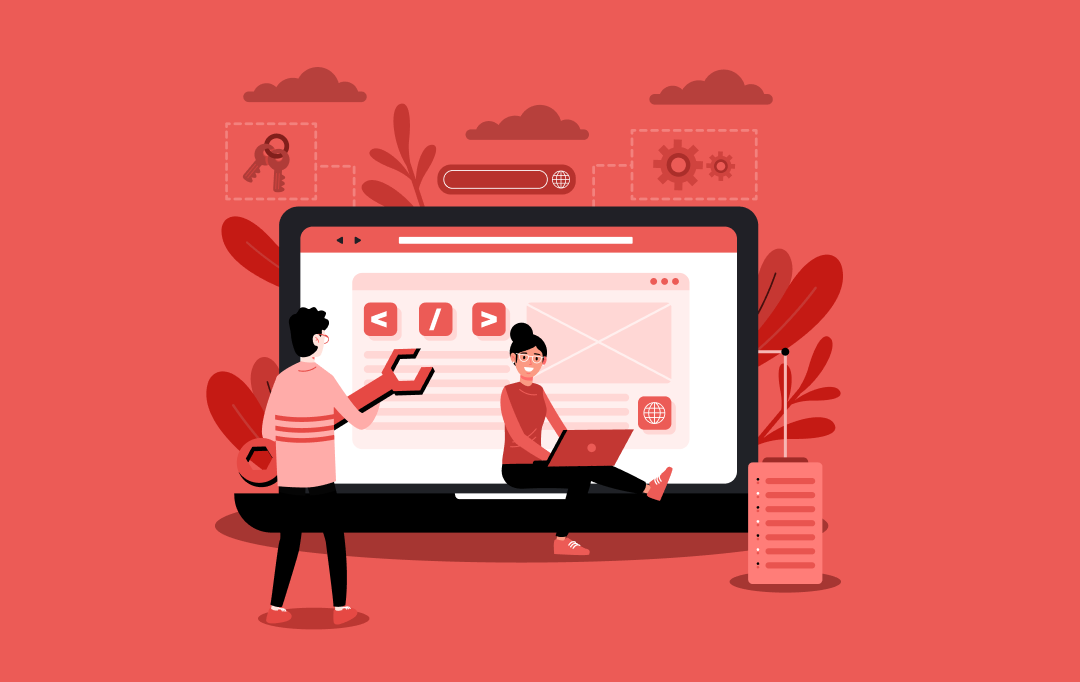
Custom Development or White Label Solutions: Which is Right for Your Business?
Key takeaways: 77% of companies are prioritizing digital transformation; the right tech approach is crucial for staying competitive. Custom development offers tailored solutions for unique needs, flexibility, and long-term scalability. Whereas, white-label solutions provide quick market entry, cost-efficiency, and easy customization for standard needs. Appinventiv’s expertise helps you navigate custom development vs white-label to choose…
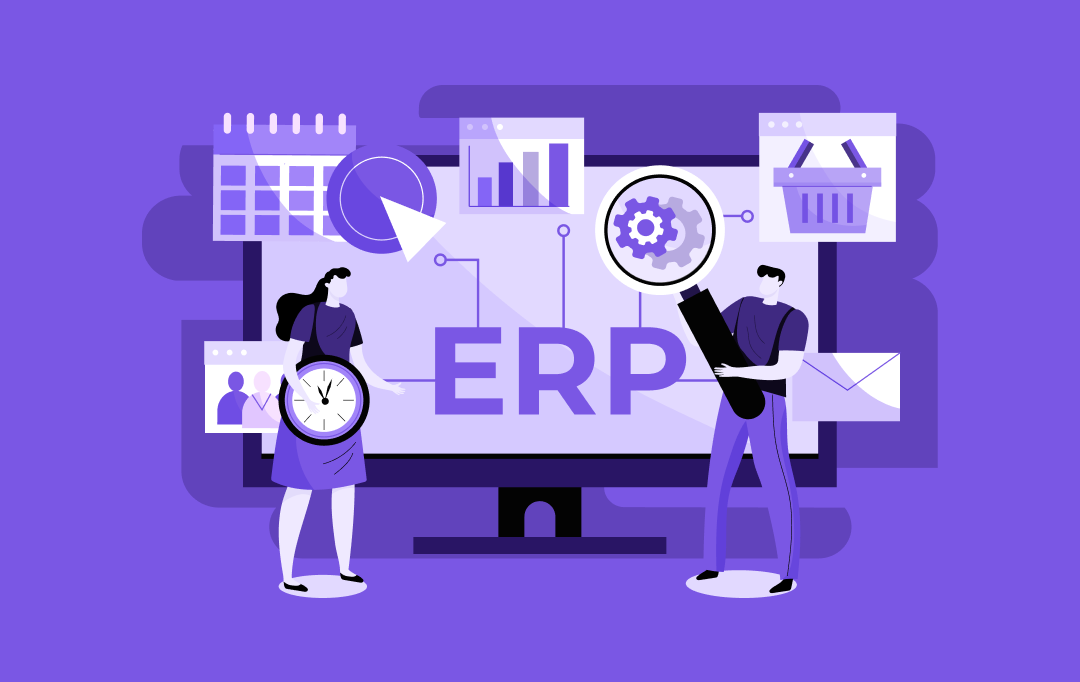
ERP Integration in Australia - Why It Is Essential and How to Do It Right
Key takeaways: ERP integration enables operational efficiency, reduced costs, and enhanced decision-making. Healthcare, finance, manufacturing, retail, and all the other sectors are benefiting from ERP integrations in Australia. While ERP integration can be costly, ranging from AUD 45,000 - AUD 450,000, it leads to significant long-term savings and scalability. Compliance with Australian regulations is critical,…
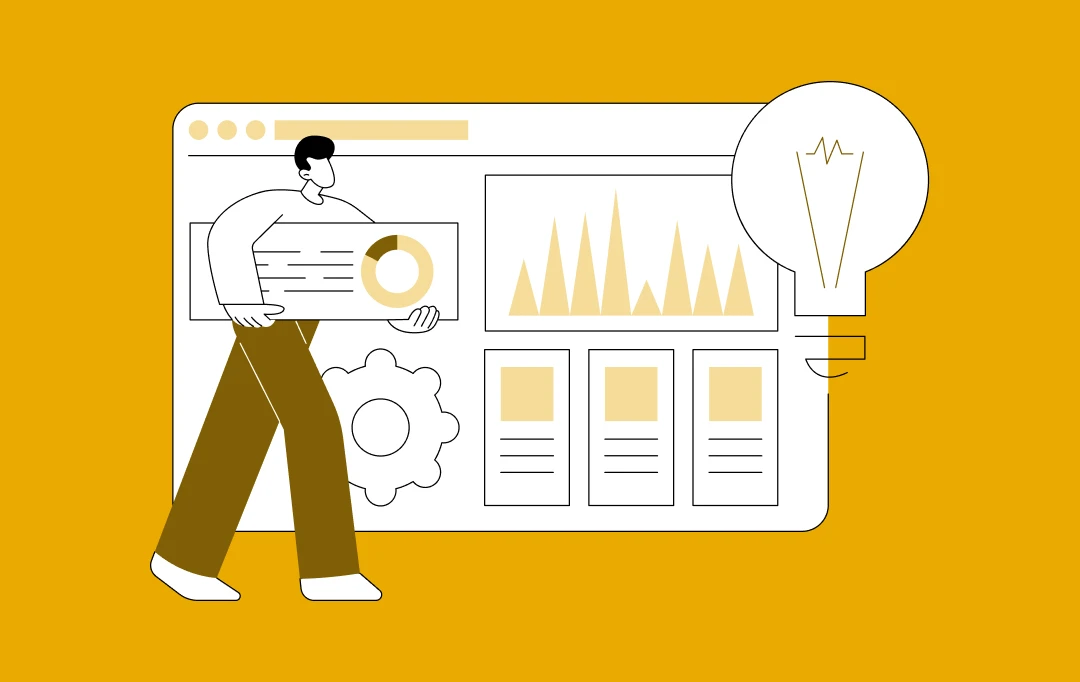
Predictive Analytics Software Development - Features, Benefits, Use Cases, Process, and Cost
Key Takeaways Predictive analytics helps businesses shift from “what has happened” to "what will happen," enabling proactive strategies rather than reactive ones. Real-time analytics and AI integration are driving the growth of predictive analytics, making it more accurate, accessible, and critical for business success. Custom predictive analytics solutions can enhance customer satisfaction, reduce costs, and…






